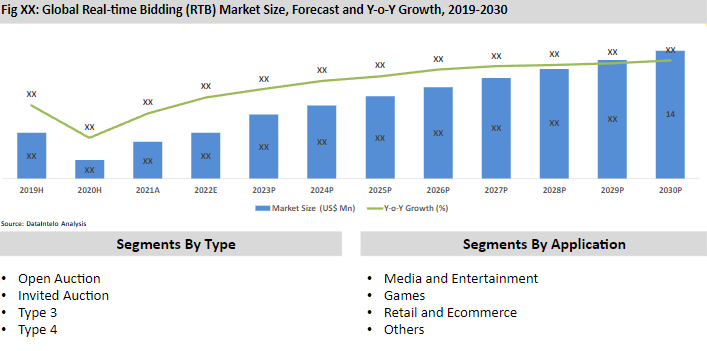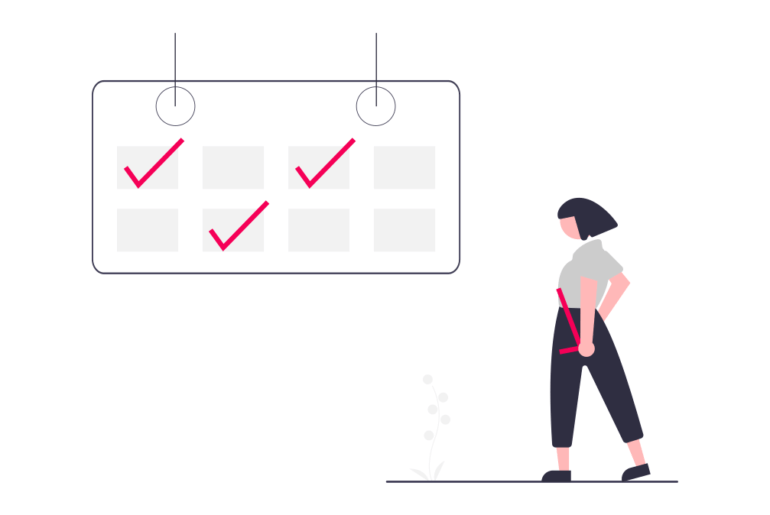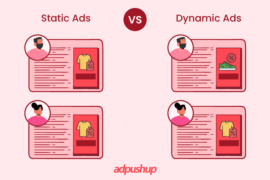Are you looking for ways to improve your Real-Time Bidding? Check out our six best practices to help you get more out of your campaigns.
Reat-time bidding (RTB) is one of the important activities in the ad tech realm. Real-time bidding allows advertisers to reach their target audience at the right time, with the right message, and at the right price.
In fact, according to Future Marketing Insights, real-time bidding (RTB) in media and entertainment is a rapidly growing industry that is forecasted to have a compound annual growth rate (CAGR) of over 17.9% during the years 2022-2032.
Real-time bidding helps to improve the effectiveness of digital advertising, as ads are more likely to be seen by the right people, leading to higher conversion rates and a better return on investment for advertisers.
Can Real Time Bidding (RTB) Continue Its Growth Momentum In 2023 & Beyond?

Yes, 2023 is going to be the year of sustainability. Real-Time Bidding is a more direct and transparent method of purchasing online display advertising. It is also better for business. The technology allows you to buy your online ads programmatically in real-time.
Best of all, you can use real-time bidding to buy media in real-time, but it also provides you with a lot of information about the target audience. Thereby allowing you to tailor the message you want to deliver to them.
There are a few factors that could impact the growth of RTB in 2023 and beyond; take a look.
1. The Adoption of Programmatic Advertising
RTB is a type of programmatic advertising which is expected to continue growing in the coming years. As programmatic advertising becomes more popular, it is likely that RTB will also continue to grow.
2. The Use of Data
The real-time bidding method relies heavily on data to target specific audiences and optimize ad campaigns. As data becomes more widely available and easier to use, RTB may become more effective and efficient, leading to its continued growth.
3. Changes in Consumer Behaviour
The way consumers interact with online advertising is constantly changing. If consumers become more receptive to online ads, it could lead to increased demand for RTB.
Moreover, another study by Future Marketing Insights suggests the primary factors that will drive the growth of real-time bidding in ad tech would be the growth of internet users and social media trends.
In addition, the growth of RTB may be impacted by changes in the broader digital advertising landscape, such as the adoption of new technologies or the emergence of new competitors.
It is important for companies that use RTB to stay up-to-date on these trends and adapt their strategies accordingly.
If you are new to real-time bidding and are looking to get the best out of your RTB spending, here are six practices you should definitely follow.
Real-Time Bidding (RTB) Best Practices Explained for Publishers
Holistic Programmatic Approach
Though there are multiple types of programmatic advertising available, the following are the major ones.
- Open marketplace
- Private marketplace
- Programmatic direct
- Preferred deals
When it comes to maximizing revenue, we believe that publishers need to take a holistic approach and develop a strategy that includes more than one type of activity. By taking this approach, publishers can ensure they are maximizing their revenue potential.
For instance, preferred deals enable direct communication between publishers and advertisers so that a set price for premium ad space may be negotiated. The remaining ad inventory is put for the open auction, where anybody can bid.
While it might initially seem daunting, combining different types of programmatic ads can actually help create a more controlled and stable revenue stream. Using a mix of ad types, you can create a more well-rounded and effective overall strategy to help you reach your advertising goals.
Check Trends & Optimize Bid Floors
If your primary objective is to increase your programmatic ad revenue, it’s essential that you understand, read and interpret industry trends. Doing this will help you set hard and soft bid floors in the best possible manner.
Many factors influence how valuable buyers perceive your inventory, and it’s important to be aware of them so you can optimize your inventory to as many buyers as possible. Some of the main factors include:
- Ad format
- Audience information
- Impressions, Traffic, and other similar metrics
If you set your real-time bidding limit too high, you’ll miss out on potential revenue. If you set it too low, you’ll also miss out on potential revenue. Finding the sweet spot can be tricky, but it’s important to get it right if you want to maximize your earnings.
SPF, or soft price floors, can help prevent missed opportunities but may also require more frequent optimization of ads- it’s a good idea to review your results every other week to ensure campaign effectiveness.
Also, read – What Should I Consider While Setting Floor Prices
Use Multiple Ad Formats
With all of the different programmatic ad formats available, it can take time to decide which one is right for your business. Each format has its own set of benefits and drawbacks that you should consider before making your final decision. Some of the ad types include:
- Display
- Video
- Native
- Social
- Audio
The list goes on. But, it’s important to test different ad formats to find one that works well with your site and audience. Try A/B testing different formats to see which ones generate the most clicks or conversions.
Also, take into consideration the user experience when placement of ads on your site. You don’t want to bombard your visitors with too many ads that might distract or annoy them.
Keep Monitoring Your Bid Floors & Blocklist
Bid Floors
Bid floors are the minimum bid that a publisher will accept for ad placement. By regularly monitoring bid floors, you can ensure that you are not overpaying for ad placements and that you are maximizing your return on investment (ROI).
Blocklist
A blocklist is a list of URLs, keywords, or other criteria that you do not want your ads to appear on or next to. By regularly monitoring your blocklists, you can ensure that your ads are not appearing on inappropriate or low-quality websites, which can negatively impact your brand’s reputation.
By keeping an eye on your bid floors and block list at least a couple of times a week, you can identify any significant changes or trends as soon as possible. This way, you can make the necessary changes to your campaign to stay on track in your real-time bidding efforts.
Furthermore, your revenue can increase significantly in a relatively short amount of time by using granular bid floor optimization methods.
This includes setting up bid floors by format, advertiser, and DSP. This will help you get the maximum out of your ad spend and improve your campaign results.
Design Responsive, Multi-platform RTB Campaigns
There are several reasons why it is important to create responsive, multi-platform real-time bidding (RTB) campaigns:
Device Diversity
With the increasing use of mobile devices and the proliferation of different screen sizes and devices, it is important to create real-time bidding campaigns that can adapt to different devices and platforms.
Responsive design ensures that your ads are optimized for different devices and platforms, improving the user experience and the chances of conversions.
User Experience
A seamless and consistent user experience across devices is crucial for building brand trust and loyalty. By creating responsive, multi-platform campaigns, you can ensure that your ads are delivered effectively and consistently across all devices and platforms, improving the user experience and the chances of conversions.
Ad Inventory
By creating responsive, multi-platform campaigns, you can access a wider pool of ad inventory and reach a larger audience. This is especially important if you are targeting specific demographics or regions, as different devices and platforms may have different user bases.
Segmenting and targeting your audience allows buyers to see how much a publisher’s audience is worth to them. This insight is vital in programmatic ad buying because it allows buyers to make informed decisions about how much they are willing to bid on ads.
Give Insights to Marketers & Advertisers
Segmenting and targeting your audience allows buyers to see how much a publisher’s audience is worth to them. This insight is vital in programmatic ad buying because it allows buyers to make informed decisions about how much they are willing to bid on ads.
Before buyers decide their bidding amount, they consider multiple factors. Following are a few of them.
- Demographic (Income level, age, gender)
- Behaviour (Device types, Operating System, Social Media Usage)
- Audience’s lifestyle Preferences & Values
- Location
The aforementioned information can be easily accessed by the programmatic data with the help of third-party cookies. But that will no longer be the case because these cookies will soon be phased out.
However, alternatives are already in the works. IAB’s Project Rearc can be the possible solution to it. The project will create a new, privacy-centric framework for online advertising.
Moreover, we recommend keeping your audience aligned with the buyers you want to attract. By demonstrating the same to your buyers through first-party data, you can increase the value of your ad inventory and generate revenue through direct deals.
Also Read – How Publishers can Determine the Value of their Ad Inventory
So, What’s Your Real-Time Bidding Strategy for 2023?
As you can see, there is quite a bit of work to be done before you can really start to see the benefits of real-time bidding ads. However, the work is definitely worth it. We hope by now, you will be better equipped to create a real-time bidding strategy for your own business.
FAQ – Real-Time Bidding Best Practices
You can use ad exchanges to perform real-time bidding. First, need to set up an account with an ad exchange. Ad exchanges are platforms that connect advertisers with publishers (website owners). Advertisers then use the ad exchange to buy ad space on websites.
This type of auction provides more transparency and allows advertisers to bid on ad space in real time, which can result in lower prices. In addition, RTB can help to improve the effectiveness of ad campaigns by allowing advertisers to target specific audiences more accurately.
Real-time bidding is also called programmatic direct and programmatic guaranteed.

Deepak has a keen eye for detail and a deep understanding of the ad tech landscape. Whether it’s through in-depth articles, thought-provoking insights, or compelling storytelling, he’s dedicated to helping people navigate the complex world of ad tech with the simplicity of his words.







